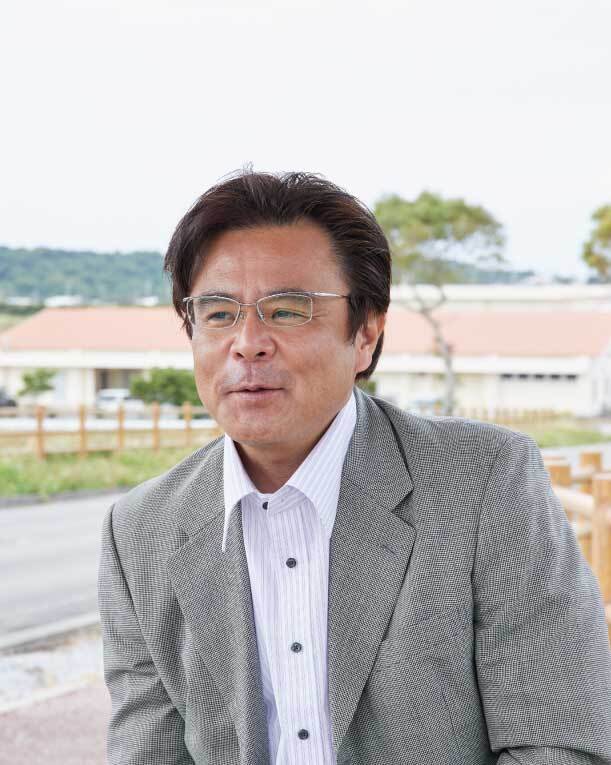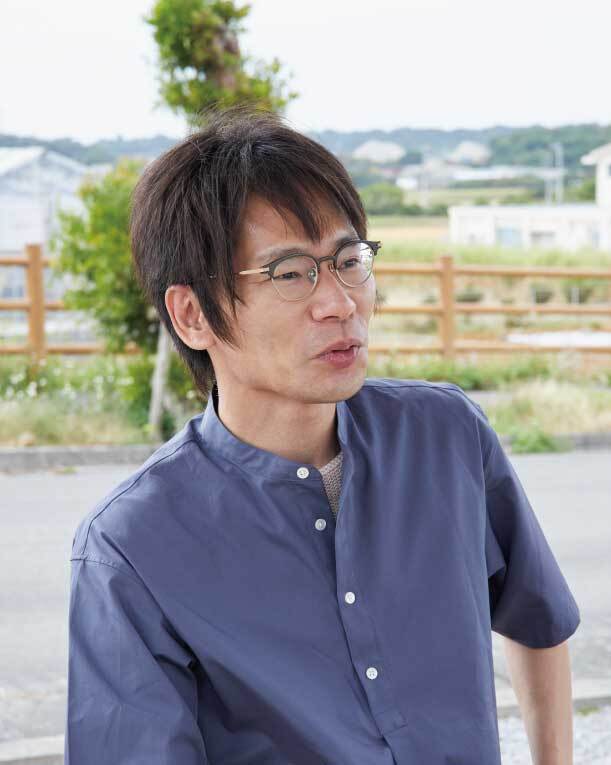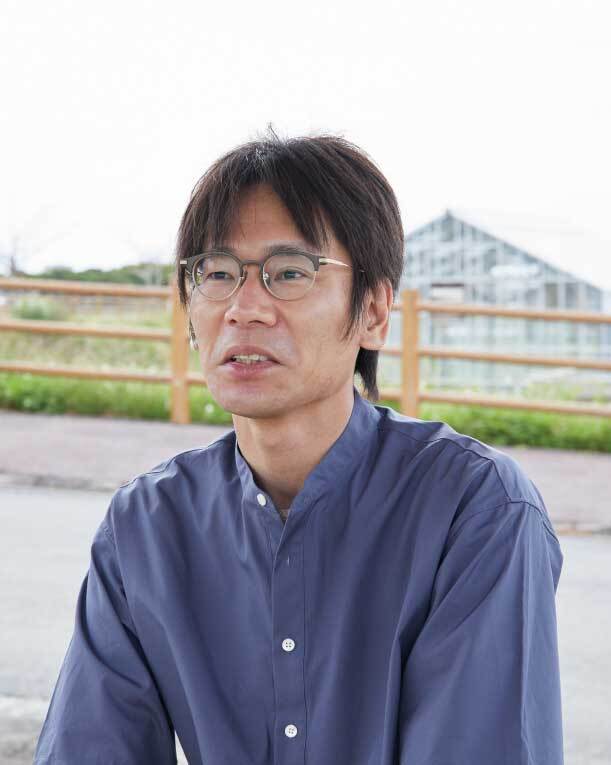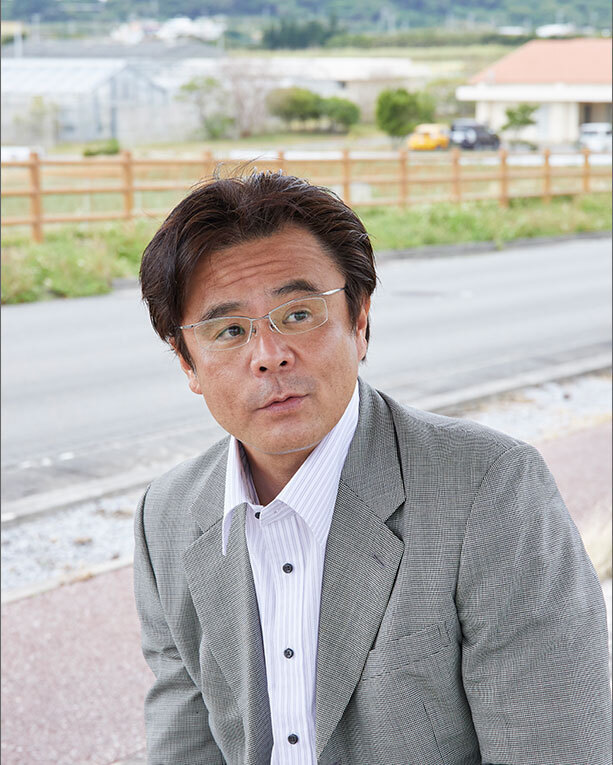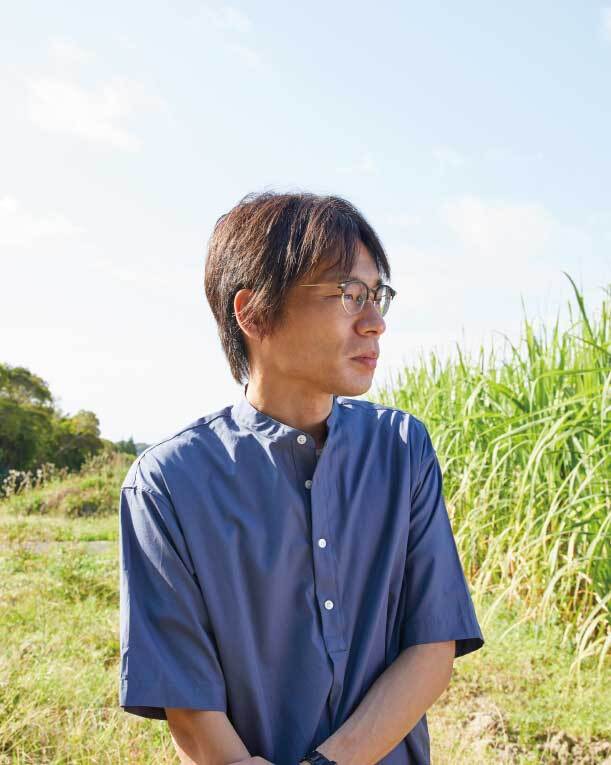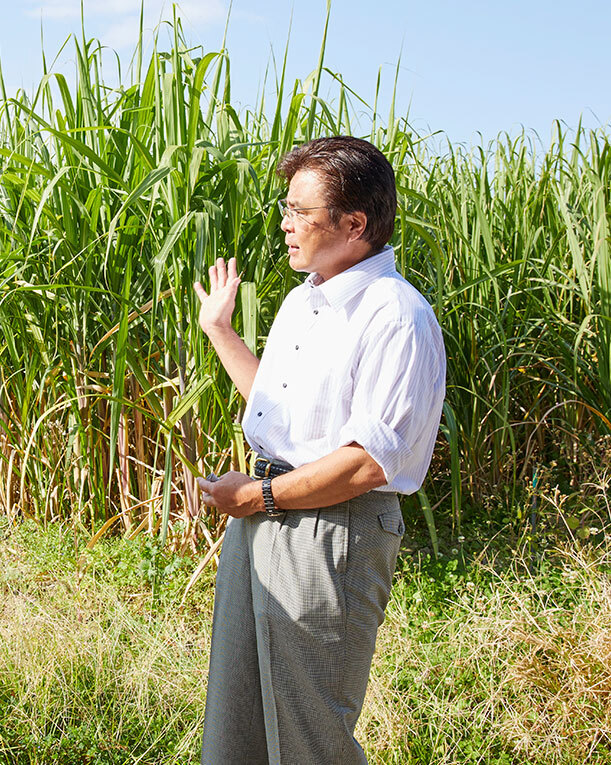Visualizing Plant Stress!
How Does Sensing Technology Contribute to Smart Agriculture? <Part I>
June 21, 2023
Modern-day agriculture in Japan faces a variety of challenges, and there have long been debates about issues like the aging population and the shortage of successors, the abandonment of agriculture land, and price competition. In recent years, climate change is creating an increasing number of environmental stresses for crops, such as droughts and extremely high temperatures. This has become a major issue. In the aim of addressing these problems, there has been an expansion in efforts to apply robotics and ICT, sensing technology, and other technologies to enable smart agriculture, labor saving, high-quality production, and stable production.
Amid these circumstances, Sony Semiconductor Solutions Corporation (SSS) is taking on the challenge of smart agriculture utilizing sensing technology that can visualize the plant response to environmental stress.So why agriculture? What exactly is SSS trying to achieve with its smart agriculture efforts? For this article, we spoke to our two co-creators at the Okinawa Agricultural Research Center about what they envision for the future of agriculture.
Tamaki Maro
Okinawa Prefecture Agricultural Research Center
Agricultural system development group(Agricultural machinery and facilities group)
Chief Researcher, Doctor of Engineering
Maro Tamaki began working at the Okinawa Prefectural Office in 1998, and was assigned to the Agricultural Machinery Laboratory at the Okinawa Agricultural Experiment Station. He was involved in typhoon countermeasures for crops and horticultural facilities as well as the development and improvement of agricultural machinery. From April 2011 to March 2014, he served as an associate professor at the Okinawa Prefectural Agricultural College. Then, he began working on environmental control within green houses and environmental stress countermeasures for crops at the Okinawa Agricultural Research Center. He served as a part-time lecturer at the Faculty of Engineering at the University of the Ryukyus from 2014 to 2021, and as a part-time lecturer at the university’s Faculty of Agriculture from 2023.
Ogawa Tetsu
Sony Semiconductor Solutions Corporation
Research Division 3
Tetsu Ogawa joined Sony Corporation in 2003. He was involved in the development of system LSIs (BIONZ) with “α” and “handycam”, and then he took over development in the boundary region of hardware and software, including memory, boot ROMs, and drivers. From 2017, he worked on the development of Smart Agriculture Solution (drone camera solution for agriculture), which began American sales in 2019. Since then, he has been involved in R&D for next-generation sensing technology.
Challenging Ourselves to Solve Problems in Agriculture Using Sensing Technology
── What are the problems that agriculture is facing right now?
(Tamaki)
There are as many problems in agriculture as there are including the abandonment of agricultural land and the shortage in successors in farming due to the aging population, among them, an issue that has been attracting attention in horticulture in recent years is the soaring prices of materials. The price hikes for steel products for greenhouses and other facilities are causing a major burden for farmers. In Okinawa prefecture, Japan, where typhoons with wind speeds of up to 80 m/s or more higher sometimes approach, there is a demand for horticultural facilities that can withstand wind damage, but the soaring cost of steel materials is a stumbling block.
In order to alleviate this even slightly, my workplace, the Agricultural Systems Development Group, is striving to reduce costs while developing horticultural facilities with high resistance to wind damage. While this design is for a facility with excellent resistance to wind damage, it is also a facility for growing crops, so light intake is very important. For example, in the Netherlands, they say that a 1% increase in light can result in a 1% increase in yield. In our situation, we need to develop horticultural facilities that offer not only high light intake but also high resistance to wind damage, even with a slender frame. That is an extremely difficult challenge.
Furthermore, Okinawa Prefecture is the region in Japan that is in the subtropical zone, making it a high-temperature, high-humidity environment. High humidity makes it difficult to use technologies like fog cooling*1 or pad and fan systems,*2 which normally can reduce the temperature at a relatively low cost. Also, temperatures are high both during the day and at night, and fluctuations in solar radiation are extreme. This is not a good environment from the point of view of growing crops. However, because it is not possible to change the climate artificially, we consider it to be one of our roles to evaluate the state of the crops while developing technology that will provide them with the best possible environment.
*1) A cooling method in which nozzles are arranged inside horticultural facility, spraying atomized water either intermittently or continuously in order to reduce the air temperature inside the facility through evaporative cooling as the water evaporates.
*2) A system in which pads (packing material with high moisture retention) are installed on the end panels and sides of a horticultural facility so when outside air passes through the pads, the air cooled by evaporation enters the facility, reducing the temperature inside.
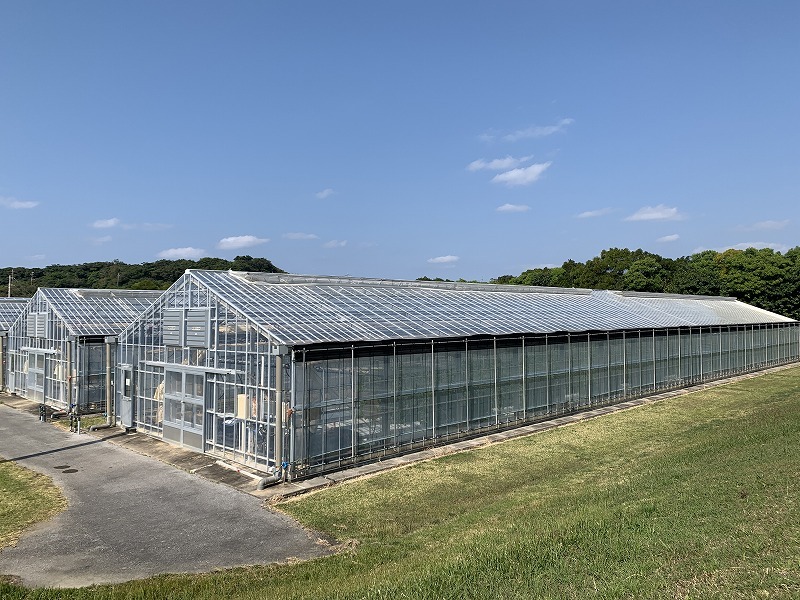
The glass greenhouses that the Okinawa Prefecture Agricultural Research Center allows us to use in our research
── What is SSS doing to address problems like these?
(Ogawa)
At SSS, we use hyperspectral cameras to conduct experiments to measure the stress level of plants. The human eye sees in what we call RGB, meaning “red, green, and blue,” or the three types of color-sensing cells that we have. Hyperspectral cameras, however, can recognize colors that cannot be distinguished by the human eye. Going one step beyond the conventional imaging technology designed for human RGB vision, we measure much finer color measurements, such as the absorption of light by wavelength and the fluorescence emitted by plants in order to achieve an optical method of measuring the interior physiological condition of plants.
For example, tomatoes look ripe and delicious when they turn red, but this color actually comes from how they reflect only red light while absorbing green and blue light, causing us to see them as red. The redness of tomatoes is closely related to lycopene, one of the pigment components of tomatoes. It is possible to differentiate minute color variations that are not visible to the human eye by using a spectroscopic measurement method to analyze the internal composition. In this study, we applied our proprietary sensing technology to the data of a hyperspectral camera to realize accurate plant analysis using spectroscopic measurements.
The pigment structure of some plants can change on a minute-to-minute basis. That means it can account for a wide variety of environmental stressors. Animals, for example, can go to a watering hole if they’re thirsty or find a shady spot if they’re hot, but plants cannot move for themselves, so they have to adapt to their environments continuously.
── What is plant stress? Is it the same thing as human stress?
(Ogawa)
It would be stressful to human beings to have to work continuously without eating, but in the case of plants, they have to do something about the enormous amount of solar energy that flows in, even in a situation where photosynthesis is not working for some reason and energy can not be consumed. It causes a great deal of stress when the amount of light, water, or other input conditions for plants do not match. Because plants don’t have the option to leave stress-inducing environments, they have to adapt their own internal structure to fit surrounding environments that change from moment to moment or sometimes even instantaneously.
At First, We Weren’t Interested in Co-creation
── What was the impetus behind this co-creation endeavor?
(Ogawa)
I am currently part of the UNVS (pronounced “universe”) Development Division, which utilizes communications and AI technology in order to apply sensing to everything on the planet, and is engaged in activities to contribute to solving social problems including the global environment. We are tackling agriculture as one of these issues. As fundamental research between SSS and Tohoku University revealed the possibility of measurement principles, we began to search for empirical research for practical application. At that time, Tohoku University introduced us to the Okinawa Prefecture Agricultural Research Center, and we approached it for joint research.
(Tamaki)
It’s part of our mission to build the optimal environment for crops. Even before Ogawa reached out to us, we were working on research into measuring photosynthesis.
However, while the machinery that we had previously used for this was able to measure photosynthesis accurately, it focused on one leaf at a time, but what we’re aiming to do is build the optimal environment for crops. That resulted in a need to evaluate the amount of photosynthesis for groups of leaves or crops from a whole field, which was a difficult challenge.
It was amid these circumstances that Tohoku University Professor Hikosaka introduced us to Mr. Ogawa. Actually, the first research theme of Mr. Ogawa that was suggested was something that would have been difficult to collaborate on. This reason was we thought that there would be many issues in making the technology applicable at agricultural business sites in Okinawa. We are engaged in this research on behalf of Okinawa Prefecture for the sake of the development of the agricultural industry, so we can’t simply agree to any research cooperation request that we receive. At the end of the day, it is essential that the research results can give back to the agricultural industry of Okinawa Prefecture.
As we continued our conversation, I asked Mr. Ogawa about his research goals in his future. His answer was measuring the plant response to the environmental stress, the same thing that we are working on now. When he said that, it dawned on us that such a technology could be applied to agricultural business sites in Okinawa. This technology research specifically is what convinced us to collaborate with him.
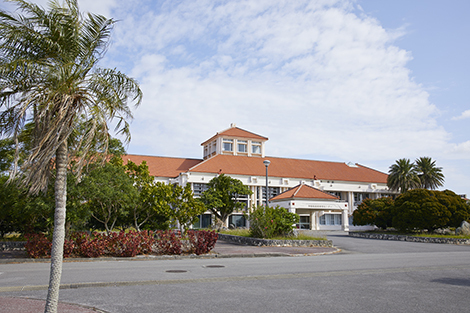
The Okinawa Prefecture Agricultural Research Center
── What kind of research do you actually do?
(Ogawa)
What we are working on right now is sensing about heat dissipation, one of the stress response mechanisms in plants. As explained earlier, excess light energy that plants can not use for photosynthesis stresses them. Photosynthesis is the process by which chlorophyll *3 absorbs light energy and produces glucose from carbon dioxide and water. Under strong light conditions, a mechanism related to a pigment called xanthophyll converts excess energy into heat, which then dissipates. By measuring and analyzing this pigment conversion using a hyperspectral camera, stress levels in plants can be estimated.
*3) The green pigment that gives leaves their color.
Specifically, we measure the response of plants to environmental stresses (such as caused by reduced irrigation) during the entire growing process close to the actual agricultural field, and confirm these using specialized methods.
(Tamaki)
NPQ*4 is often used as an indicator of the heat dissipation that Ogawa mentioned. Plants that the camera measures as having high NPQ are said to be under stress. There is a certain value that represents the approximate amount of photosynthesis that must occur in a normal environment, but when a plant is under stress, its NPQ value will increase and the amount of photosynthesis will decrease. If this happens, it can have an impact on the yield, so the need to take action arises.
However, at agricultural business sites, sometimes both the NPQ and the amount of photosynthesis are low. This means that the problem is something other than stress. It’s also very important to be aware when such a problem occurs. Having a drone fly over a farm all day enables early recognition of which areas are normal and which need attention, and this makes it possible to take action early, which is crucial because it can impact the yield. This offers a view of some of the future prospects for R&D.
*4) Non-photochemical quenching: A mechanism of dissipating the collected light energy as heat, without photosynthesizing it.
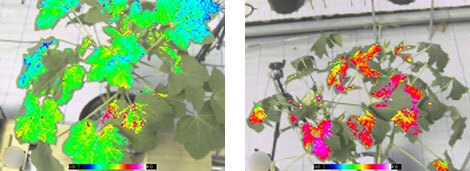
Data captured using a hyperspectral camera
── Okinawa has frequent typhoons. Does that make it a stressful place for plants?
(Tamaki)
For example, the US state of Arizona has a harsh climate with little rainfall, but if it just had water, the environment would be stable throughout the year. Right now, by using a relatively low-cost cooling technology, it’s possible to maintain the internal temperature of horticultural facilities at 20°C throughout the day, creating an environment that is extremely conducive to growing plants.
Meanwhile, Okinawa has typhoons, so there can be substantial temperature fluctuations from day to day. It also has a lot of clouds, so places that seem to have good sun exposure might soon be thrown into shadow and then back into sun again. An environment with such abrupt changes in temperature and solar radiation cannot be a good one for plants. Also, remote islands suffer from water shortages frequently. Circumstances like these are a source of stress for plants, and can lead to reduced yield. This is an enormous problem for Okinawa Prefecture.
Even in stressful environments, plants will strive to adapt, even to their detriment. If a plant wilts, you can tell at first glance that it is in bad shape, but Okinawa’s major crop of sugarcane, for example, is thought to wilt only after being exposed to stress for a very long amount of time. We think it will be useful to be able to catch stress at the early stages so that people can take action early and ensure a stable yield.
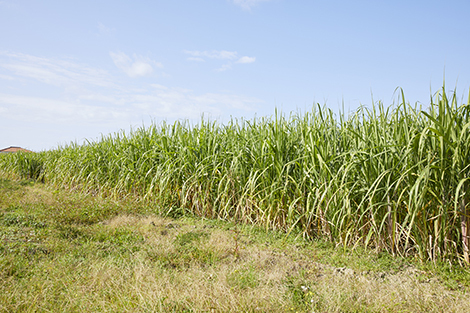
Sugarcane fields at the Okinawa Prefecture Agricultural Research Center
Related links
Read on to Part II to learn how hyperspectral cameras can be used to change agriculture going forward, as well as the future that SSS envisions for smart agriculture.


